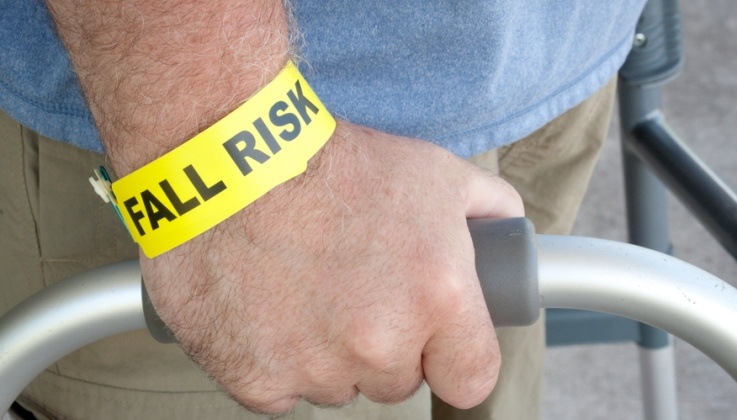|
|
CMS Issues Proposed Revision Requirements for Long-Term Care Facilities' Arbitration Agreements
Topics: Risk Management, Quality Assurance, Administration, Incident Reporting, News, Health Information Technology
How to Manage Your Reports without Losing Your Mind
I don’t know about you but I don’t like small appliances that only do one task. Don’t buy me an appliance if it isn’t multi-functional or I'll return it! So why should reports be any different?
As with anything in life, there is good news and bad news about reports. First, the bad news. We have more reports that tell us more about our centers than we sometimes care to know. CASPER, PB&J, Quality Measures, 5-star, wound logs, fall logs, pharmacy, 24 hour, RUGs/PPS/MDS, weight loss, rehospitalizations, infection control...the list just goes on and on!
Topics: Risk Management, Quality Assurance, Administration, Incident Reporting
Your Adverse Events Are a Gold Mine of Opportunity
You're required to keep track of adverse events in your communities, but keeping track means different things to different people. Some folks only do what they have to do to meet the minimum standard. Their teams fill out paper incident forms and place them in a file. They might even put the data into their EHR. Usually, teams compile the information periodically—most likely in an Excel spreadsheet—and share it at a quality meeting hopefully on a quarterly basis.
Most communities hate even thinking about adverse events, but the best teams realize incident reports contain a gold mine of valuable data. QA Reader is an adverse event tracking software that turns your incident reports into an insight generator to improve QA and even help prevent incidents before they occur.
Topics: Incident Reporting
Real Life Incident Reporting: Quality Care in a Growing Community
Many senior living communities find that organizational growth is both a reward and a challenge. While your hard work has enabled you to expand your services and improve your market share, you may find that keeping up with quality measures becomes more difficult. Advantage Living Centers (ALC), a 12-community organization based in Michigan, became fully aware of these challenges during a period of growth. ALC wanted to find a way to reduce incidents, improve care, and implement a consistent tracking system without losing momentum across their organization.
Topics: Case Studies, Incident Reporting
8 Reasons NOT to Use Excel to Manage Adverse Events
Most senior living organizations still attempt to track adverse events by keying them into Microsoft Excel spreadsheets. Tracking, managing, and reporting adverse events is mission-critical to senior living facilities and their parent organizations.
EHRs are patient-focused, while adverse event management is facility-focused. So, quality and nursing staff take matters into their own hands to handle adverse event tracking in spreadsheets.
Topics: Quality Assurance, Incident Reporting
I was talking to a prospective client recently—a Director of Nursing for a Skilled Nursing Facility with about 130 residents. I was trying to get a feel for how they work and whether or not QA Reader would be a good fit for them.
I asked my normal questions: how many residents, how do they currently report incidents (paper or in an electronic health record), how do they keep track of incidents, frequent fallers, potentially serious events, etc. As we were talking, the DON suddenly blurted out, “Incident reports are a waste of time!”
Topics: Incident Reporting
If your senior living organization consists of multiple communities, you know it’s essential for each community to report its risk management data to the regional and corporate leadership. The incident data you receive are your “eyes and ears” when you can’t be at each community all the time.
Topics: Incident Reporting
See a 300% Jump in ROI on Adverse Event and Incident Tracking
Your organization manages adverse events much like everyone else. Someone, likely a pretty high-functioning nurse, accumulates paper incident reports manually or from your EHR system. They periodically type them into a spreadsheet, then sort them and count the different types of incidents by community. They do a pretty good job of it, even though they complain that they aren’t very good at Excel, that some buildings don’t report consistently, and that they can’t get anybody’s attention with the results that are often murky at best compared to benchmarks that they can’t find.
Let’s put aside the qualitative aspects of incident reporting and let’s overlook the most important aspect of your current incident reporting and adverse event management process—that it doesn’t work as well as it should and could. Let’s focus on one simple thing: how much does it cost you?
Topics: Quality Assurance, Incident Reporting
3 Facility Warning Signs of a Fall Hazard to Your Residents
Are you doing everything you can to prevent falls at your facility? You’ve implemented physical changes such as handrails, non-skid floors, and lower bed heights. You’ve educated your nurses about fall prevention strategies. You properly document incidents in your EHR.
These are important fundamentals, but there’s more you can do to help protect your residents and your staff from falls. You can prevent more incidents if the right processes are in place. The following warning signs indicate your fall prevention strategy isn’t as robust as it should be.
Topics: Risk Management, Incident Reporting
QA reports can be a valuable tool in your risk management efforts — if they’re giving you the information you truly need. Your EHR might be holding a lot of data, and perhaps you get a few QA reports too. But do you have clear, comprehensive reports that benefit your facility, staff, and residents?
Topics: Quality Assurance, Incident Reporting










